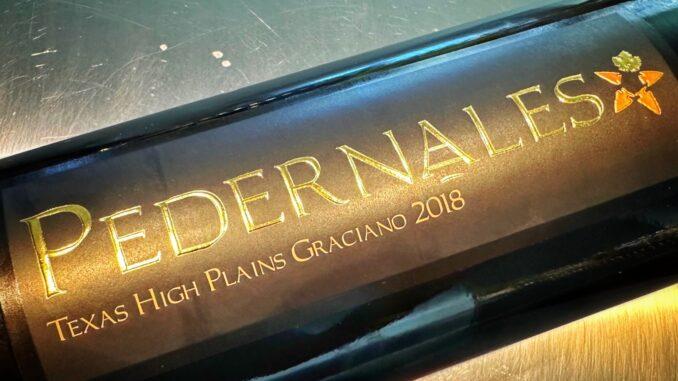
Many wine aficionados haven’t had the opportunity to taste wine made from the Graciano grape and some have never even heard about it. Furthermore, some have had Graciano, and didn’t know it. Sound weird? Why do you think this is the case? These questions are all the more reasons for this VintageTexas Graciano redux.
Graciano is a red wine grape known best and grown in northern Spain, mainly in Rioja and Navarra regions, and a little bit in the southern French wine region of Languedoc. I did a deep dive into the background of this grape in a VintageTexas blog (click here) earlier this year. Reread it if you like. I won’t try to rehash much here (Ok, maybe just a little bit).
Well, Graciano is a common blending partner, albeit in small volumes, in the Tempranillo-dominant red wines of the Rioja region of Spain. But, what makes Graciano so intriguing, significant and now available to Texas wine drinkers?
The classic Graciano wine is moderately tannic, deeply colored and intensely perfumed, with aromas of mulberry, violets and chocolate. In Rioja, where most red wines are made with a predominant oak presence, these notes are complemented by vanilla and sweet spices – the trademarks of oak-aged red wine, and thanks to Graciano, something more.
For a Texas Fine Wine ”Talk and Taste” Zoom event earlier this month hosted by certified sommelier and wine marketing maven Denise Clark, I received a bottle of 2018 Texas High Plains Graciano from Julie and David Kuhlken’s Pedernales Cellars. In my previous blog mentioned above, I focused on the Pedernales Graciano from the 2017 vintage. So, I figured that this would be a good opportunity to do an update on the grape and the wine from the 2018 vintage.

The 2018 Graciano was blended a little more than the 2017, and this time with fruit-forwarding 19% Syrah, 6% Carignan, thus yielding 75% Graciano as is necessary for a varietal-designated bottling. I concur with the Pedernales Cellars description of aromatics and flavors are lively with what I usually refer to as ”cherry-coke”, coffee and, to which I will add pipe tobacco, that extend through the mid-palate, following with dark and dusty dried fruit (maybe blueberries) and herbs to the finish.

The first planting of Graciano that I saw in Texas and eventually tasted was from Jim and Karen Johnson’s Alamosa Cellars estate vineyard sometime around 2010 (from memory). But, still not very plentiful, has not made its way into many Texas Tempranillo and Spanish-style red blends. Thank goodness, we are now getting more of it finding its way, in small qualities, into Texas Tempranillo blends for what I often refer to as the continuing evolution of Texas Tempranillo wine.
One thing that I love about Graciano, is its intense aromatic character even when used in small quantities in red blends that can be used effectively to fill-out the mid-section of Texas Tempranillo wines. Also, a plus for Graciano is its slow ripening qualities in the vineyard that tend to offer its higher acidity (the 2018 Pedernales Cellars Graciano has a lip smacking pH of 3.50) in Graciano-containing red blends with Tempranillo, a grape that tends to drift to higher pH as it nears ripening. This acidity makes for a pleasurable quaff and a very food-friendly wine.
I hope that you can find the opportunity to either visit the Pedernales Cellars tasting room and to explore their tasting menu. Check to see it they still have either their 2017 or 2018 Graciano, or just explore and find your own favorite wine – white, red or rosé.

Photo Credits: Pedernales Cellars

Be the first to comment